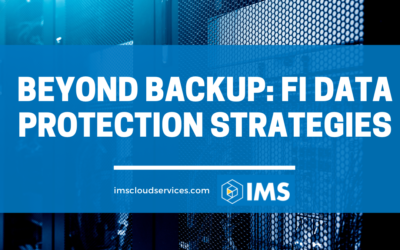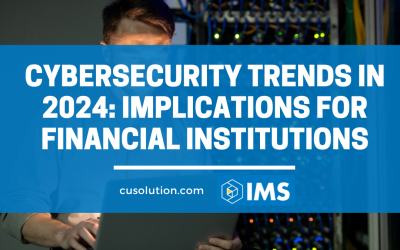Cybersecurity is a major concern for companies across all industries, especially in the financial sector. The financial industry is facing a unique set of challenges. With vast amounts of sensitive information being exchanged, organizations must take extra precautions to protect their data. To ensure that their networks are safe, financial institutions should be aware of key performance metrics.
Let’s discuss the top network performance metrics for the financial industry and why they’re important for organizations to understand.
Network Performance Metrics to Watch: Bandwidth
There are many instances when you hear phrases like “we don’t have the bandwidth for that.” Often, this conveys a sense that whatever solution or course of action you’ve proposed, the current infrastructure of your credit union can’t handle it. This is what makes bandwidth one of the essential network performance metrics for the financial industry.
Bandwidth is the term used to describe the rate of maximum data transfer in your network over a certain amount of time.
The goal is to monitor and optimize your network’s bandwidth without going over the limit.
If your favorite retail store encounters a bandwidth problem that leads to downtime on its website, it can regain the trust of customers with sales and smart marketing. But credit unions are financial institutions, something that people rely on 24/7. Downtime and bandwidth issues for you can mean the loss of lifelong members.
People want infinite and unlimited access to their financial accounts. They want faster funds transfers, instant deposits, and payment options. This doesn’t leave much room for error. In fact, it makes it more crucial for your credit union to ensure that you have the bandwidth to handle whatever may come. And in these uncertain financial times, there are so many variables that your members will look to you to plan for and protect them from.
Level of Preparedness
Level of preparedness is a network metric that helps you determine how many of the devices on your network are fully patched and up to date. This is an important metric for credit unions and other businesses in the financial sector because it can help you detect and eliminate vulnerable devices and services.
Scanning for and managing vulnerabilities can also greatly reduce security breaches and lower IT and other costs.
Security Incidents/Intrusion Attempts
How many times has an attacker gained access to your information, assets, and/or network? How many times has an attacker attempted to access these items? Those numbers tell a story.
Of course, no cybersecurity effort should be without a thorough and frequent look into security incidents and intrusion attempts. Keeping an eye on these numbers allows you to recognize vulnerability trends more quickly.
Effective network performance keeps your vulnerabilities low. This means your analysis of security incidents and intrusion attempts should yield consistent results over time. That is, your numbers will stay consistent if your IT operations continue to evolve to protect your data from the latest threats.
If your IT program isn’t keeping things secure, time is of the essence. And it saves you time to keep yourself and your credit union leadership teams apprised of the number of incidents month to month and year to year.
Packet Loss
Packet loss measures the number of data packets lost during a transfer between two destinations in your network. Packets are the tiny pieces of data that are being sent and received over digital channels. This includes everything from downloaded files to email correspondence and more. There are many things that cause packet loss from software issues to network congestion or router problems.
Here’s a helpful tutorial on how to test for and fix packet loss issues.
Unidentified Devices on Internal Networks
Though most people imagine a hacking or breach attempt as having originated from “outside the castle walls,” it’s important to remember that every employee and member who accesses your network has the ability to corrupt it.
Employees can introduce viruses and other malicious code via their personal devices and habits. This can lead to issues as you are working toward building an efficient IT network.
Company vs. Peer Performance
A high-level KPI to watch for in the list of network performance metrics for the financial industry is company versus peer performance. An efficient IT network, especially in the financial sector, should be able to keep performance above the average level for your industry.
You can compare a range of basic network metrics, including many of the ones we listed above. There are several reporting companies that have industry averages available online for you to compare against.
This is a metric that is more important when it comes to positioning your success in the industry. In essence, you won’t need this metric to improve specific cybersecurity efforts. But you will need these comparisons to show your board members and other credit union leaders that you are aware of the industry standards and are working toward and achieving those levels at the time you report to these governing bodies.
Network Connection
Checking connection is a big performance metric for ensuring optimal network performance. This metric shows you the connectivity between all the devices, nodes, and systems in your network.
You can use this metric to find and minimize service interruptions before they cost you customers and important data or operations.
IMS uses the premier backup solution for credit unions. This allows you to keep your credit union data up to date and stored securely at an offsite IMS data center. In addition to backup and recovery, this Rubrik backup solution also includes continuous data protection, ransomware recovery, replication and disaster recovery, virtualized environments, and Windows and Unix protection.



